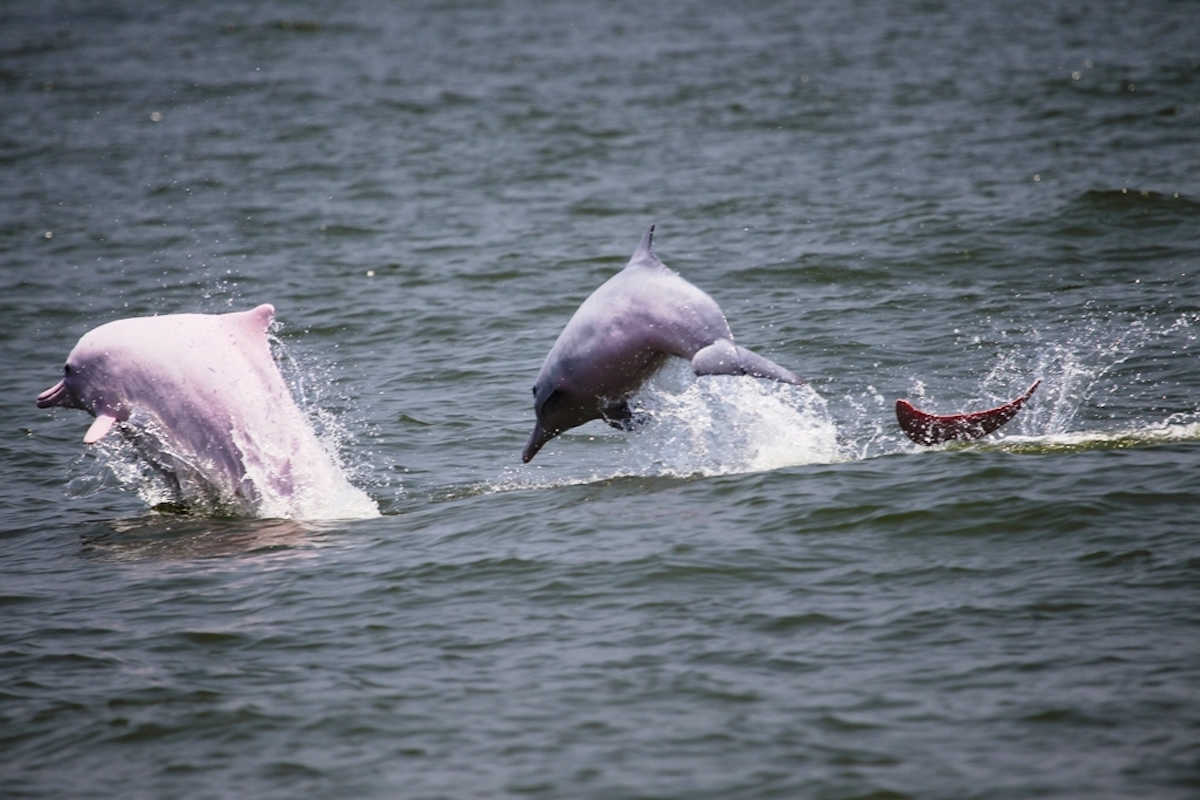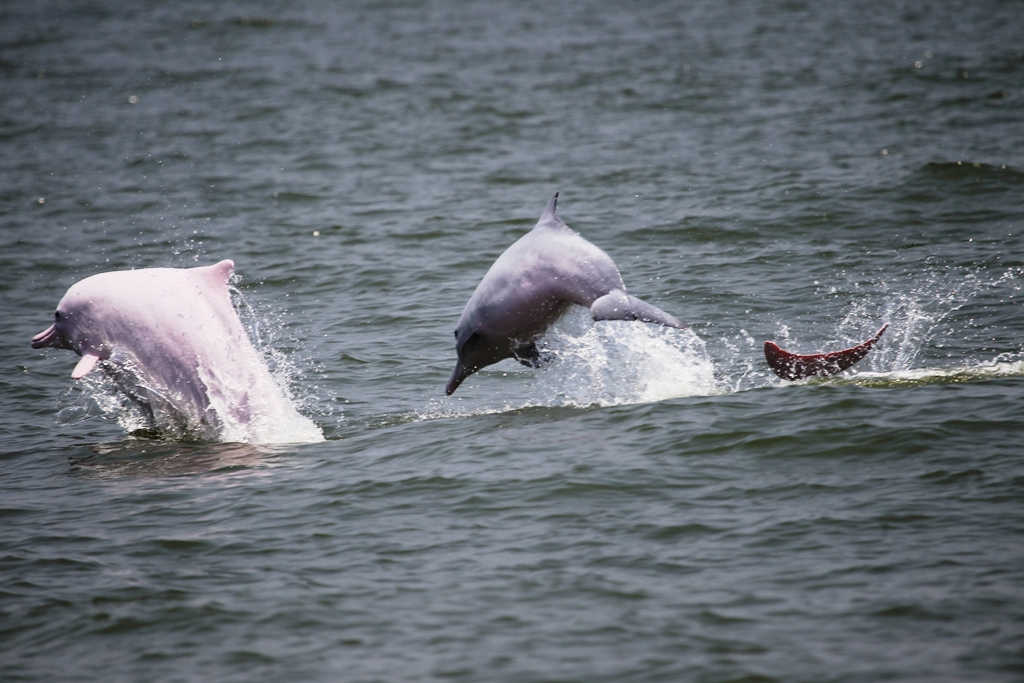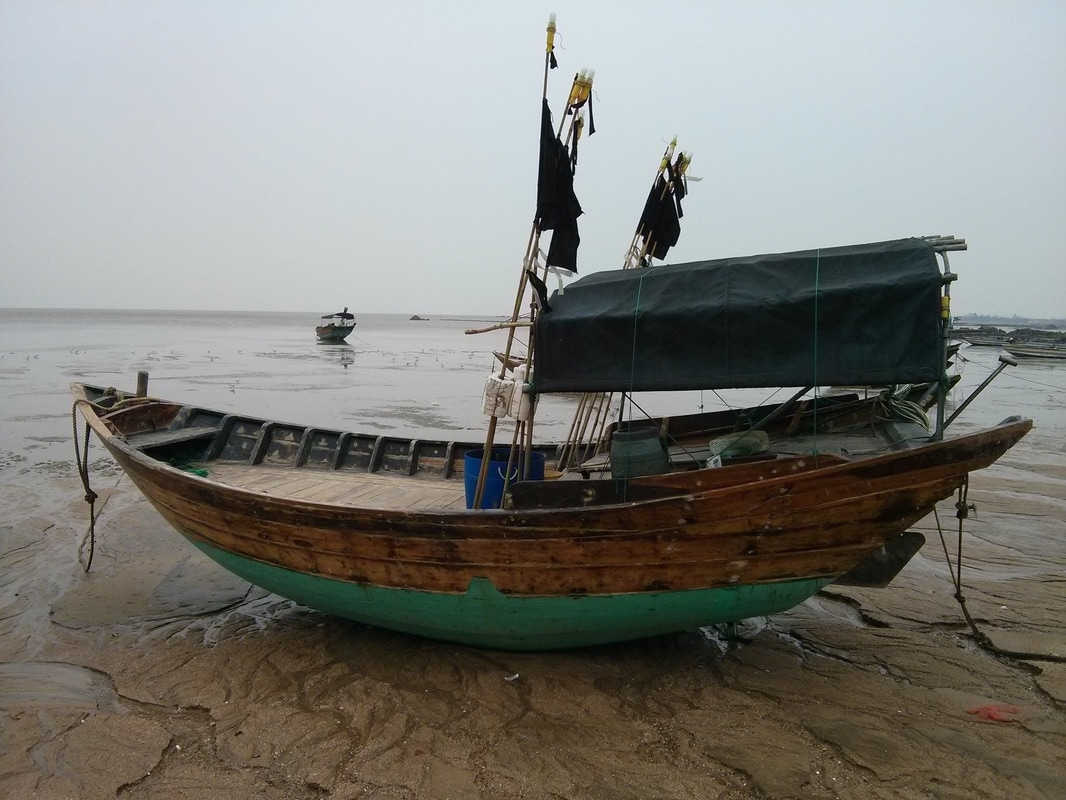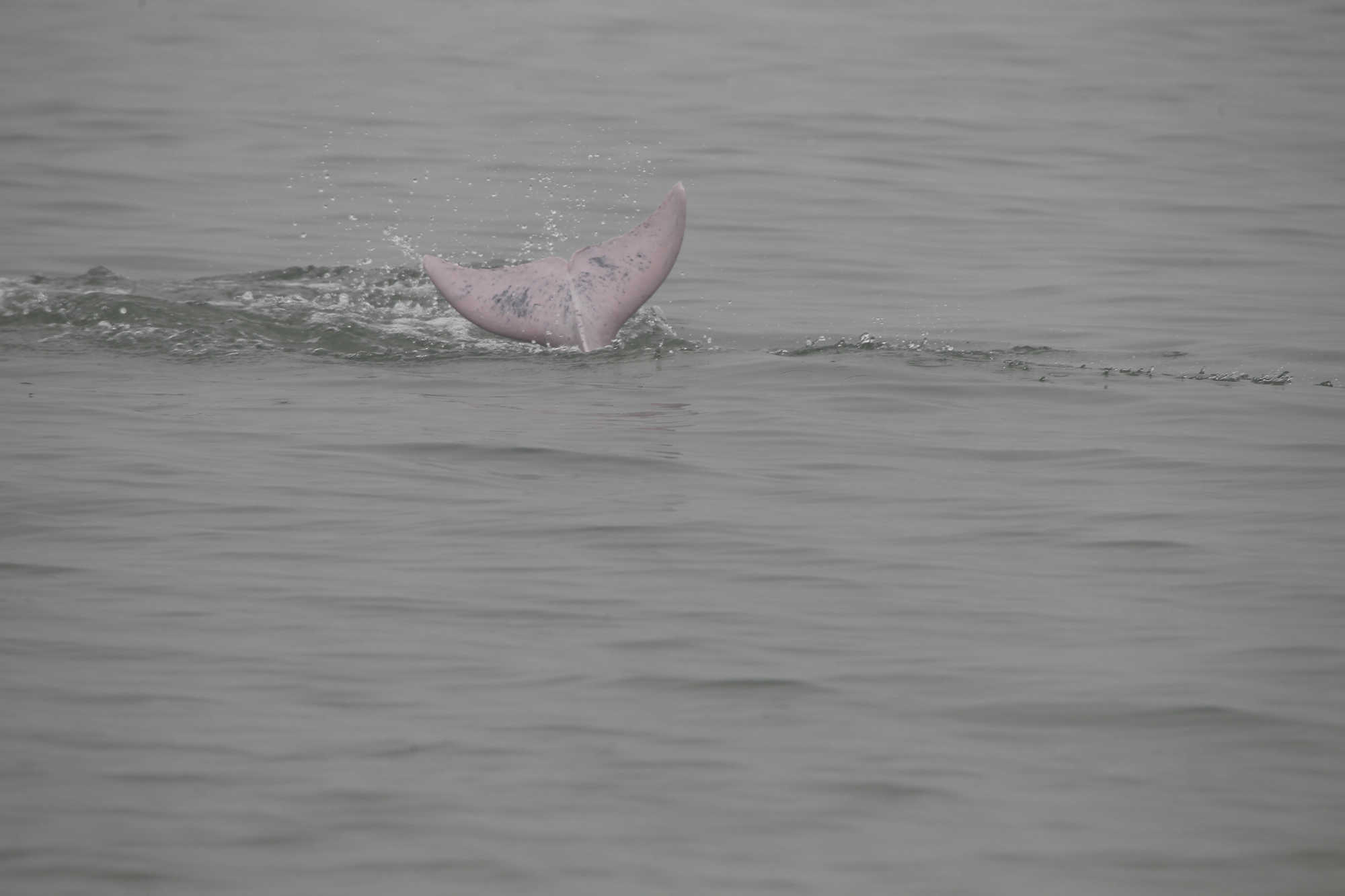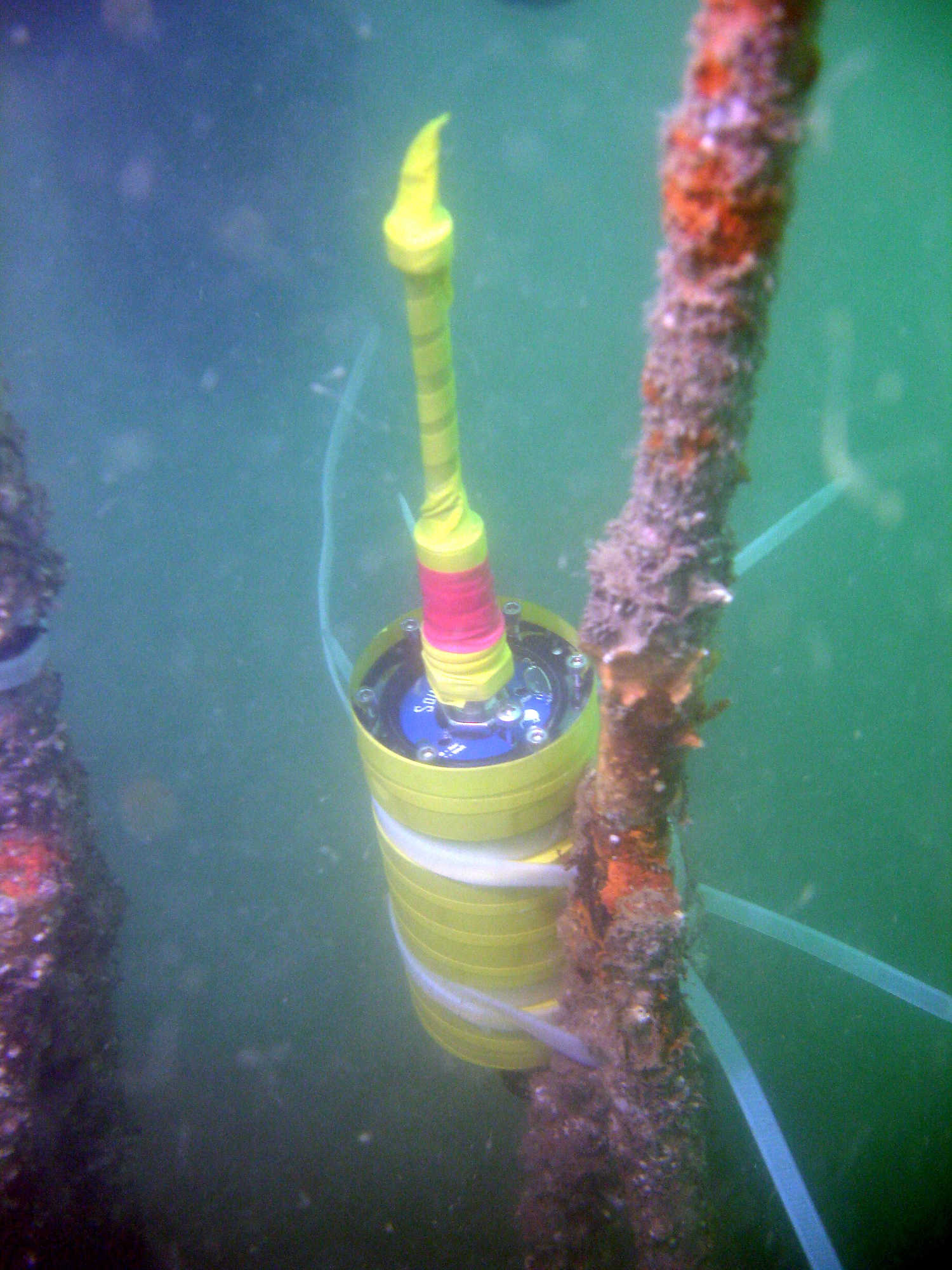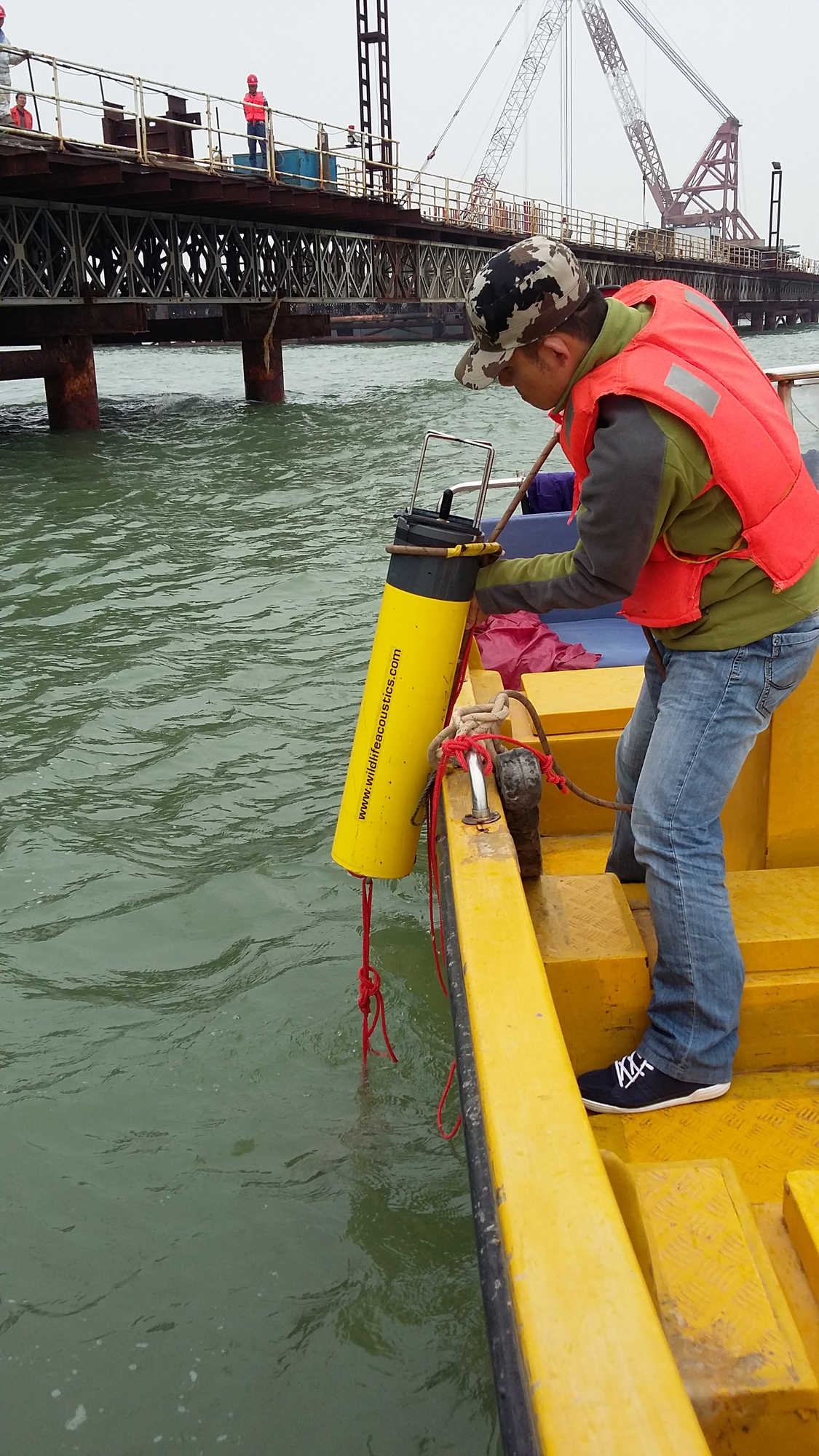In close collaboration with the Institute of Hydrobiology of the Chinese Academy of Sciences, we have been undertaking passive acoustic surveys of the Pearl River Estuary’s soundscape, including an extensive monitoring programme for Chinese white dolphins and Indo-Pacific finless porpoises.
Projects:
Movements of Indo-Pacific humpback dolphins and Indo-Pacific finless porpoises within high-speed ferry lanes
We have been engaged by World Wild Fund – Hong Kong (WWF-HK) and The Oceanway Corporation, to continuously collect data from several listening stations systematically deployed near the Soko Islands to monitor dolphin movements, habitat use and their responses to the high-speed Hong Kong-Macau ferries. These data are urgently needed as the HSFs’ come close to important feeding grounds for Indo-Pacific humpback dolphins and Indo-Pacific finless porpoises. The data from this project will be used to help the government in ensuring the conservation of these marine mammals.
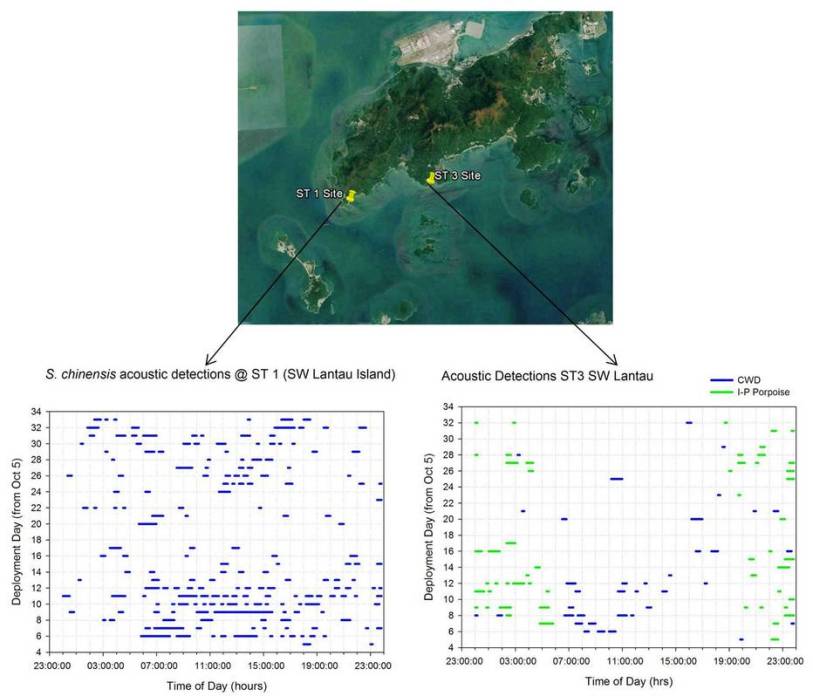
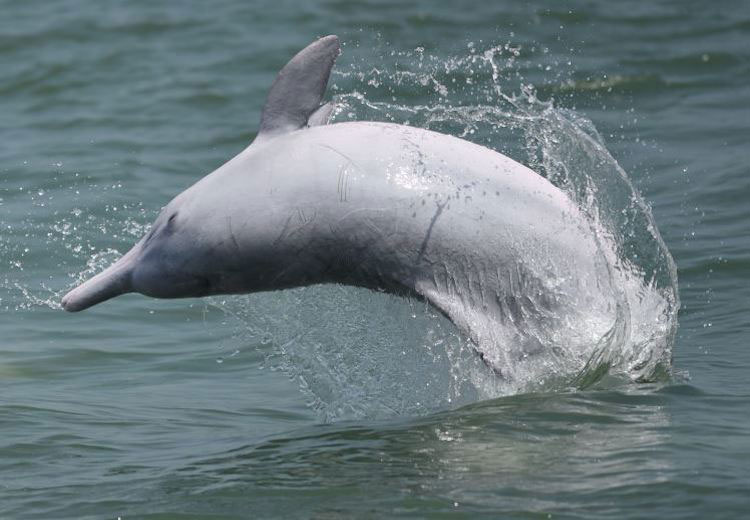

Looking at habitat use in Indo-Pacific humpback dolphins using passive acoustics
Shifts in habitat use and distribution patterns in dolphins are often concerns that can result from habitat degradation. With Professor Ding Wang and Kexiong Wang at the Institute of Hydrobiology, and engaged by WWF-Hong Kong, we are investigating how potential changes to a habitat from human activity may alter dolphin distributions along west and southwest Lantau Island and the Soko Islands by studying the relationships between fish, dolphins and vessels.
What we are seeing in the Pearl River Estuary is that the dolphins are returning to a specific areas to forage, irrespective of the vessel pressure during that time. Several questions arise from this. Are the dolphins demonstrating a particular level of tolerance to vessel noise (there’s not enough data to show this)? Are they following the fish to because the fish are so limited in their distributions? What can we expect if the fish populations were to drop off from over-fishing and/or habitat degradation?
Completed Projects:
Acoustic propagation modeling for piling and zones of influence for Chinese white dolphins and Indo-Pacific finless porpoises in south Lantau waters, including the Soko Islands
We were engaged by World Wide Fund for Nature – Hong Kong to undertake underwater noise modeling of impact and vibro pile-driving for an LNG terminal off the Soko Islands. These assessments are often required as part of Environmental Impact Assessments because marine mammals can be considered sensitive to underwater noise.
Our modeling techniques use the widely used parabolic equation RAM code and ray/Gaussian beam tracing Bellhop code. These fully range-dependent models allow for the incorporation of environmental parameters to provide a more accurate noise assessment, as part of the pre-consenting process.
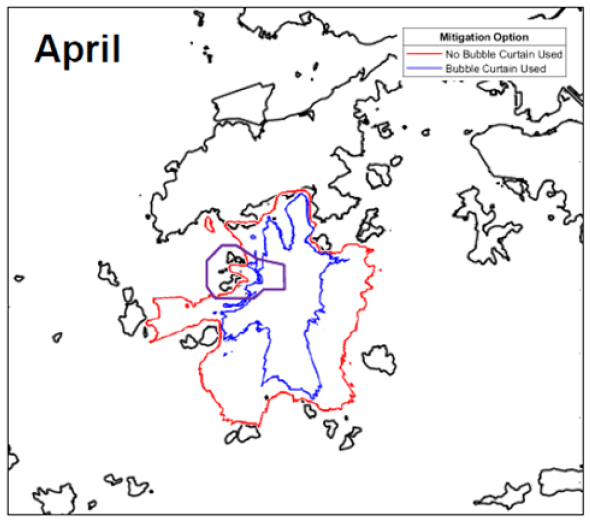
An example output of the noise model, with specific contours reflecting a 120 dB re 1 µPa contour. These can be interactive, and changed according to the client’s needs.

The passive acoustic listening stations were serviced monthly using SCUBA. The waters of the PRE are particularly hazardous for scientific equipment and therefore a bespoke mooring design was required for this project.
Using passive acoustics to map the Spatio-temporal distributions of soniferous fishes
Indo-Pacific humpback dolphins and Indo-Pacific finless porpoises survive almost exclusively on a fish diet. In an area like the Pearl River Estuary where intense development is occurring, a long-established fishery with millions of tonnes of fish harvested annually and a decreasing dolphin and porpoise population, there is an urgent need to understand where the fish are and where they go at different times of the year. Necropsies performed on stranded dolphins in Hong Kong have shown soniferous fishes to be the most important prey numerically (over two-thirds of the stomach contents were these kinds of fish). Therefore, this presented a unique opportunity to use passive acoustics to eavesdrop on the Pearl River Estuary and start mapping the distributions of these fish throughout the year.
The dataset collected revealed at least five clear chorus-types, that we believe are from five different species of soniferous fishes. This is because the fish chorus-types show distinct and consistent temporal partitioning (i.e. they occur at different times of the morning or night) and our statistical tests show the spectral characteristics of each chorus-type to be significantly different.

